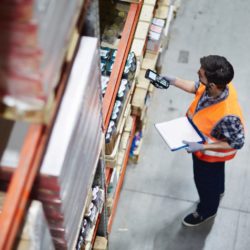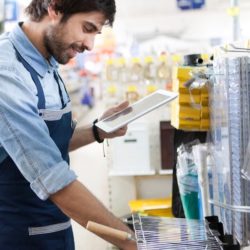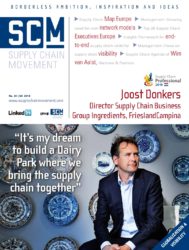First mile and last mile are critical for flawless delivery performance

The efficiency with which retailers manage their processes at the beginning and end of their supply chain logistics are key to their survival. That claim is made by Zetes – a specialist in identification and mobile solutions – in a new report on the most critical aspects of supply chains: the first mile and last mile. The report also reveals that market leaders succeed in picking items within 20 minutes of the order being received and in delivering at least 98% of the products first time in full.
The face of retail is changing dramatically. In a report titled ‘The first and final mile: Key considerations for flawless and sustainable delivery performance’, Zetes claims that if retailers want to appease the demands of the ‘need it now’ digital-savvy consumers, they must rely on an efficient and well-connected logistics structure that helps them to provide a seamless customer experience every time – even in peak periods, when up to a third of deliveries traditionally arrive late or incomplete.
In order to deliver a first-class experience, says the report, there are two critical aspects of the logistics process that must be flawless: the first mile – the process of picking, packing, validation and transport triggered by a customer order – and the last mile – the final delivery of the product to the customer, whether at home, at the office, to a drop-off point or smart locker, or in store via click & collect. Zetes states that it is the efficiency with which retailers and their logistics partners can manage these two aspects of the supply chain logistics in seamless way that is key to their survival.
The rise of urban consolidation centres
Urban consolidation centres – locations where deliveries from multiple suppliers are brought together and sorted resulting in fewer shipments and optimized loads – are on the rise. According to Zetes, using such centres could save companies 25% per delivered parcel and could reduce delivery-related mileage by up to 45%. Furthermore, they could cut vehicle maintenance costs, reduce emissions of CO2, nitrogen oxide and particulates, and ease traffic congestion.
Zetes suggests that night deliveries could also be explored to reduce congestion during the day, allowing suppliers to use bigger trucks and reducing the number of deliveries. “This model not only requires the local authorities to review their restrictions on night deliveries, but also creates a need for safe delivery locations such as smart lockers. If night deliveries catch on, the percentage of first time in full deliveries will rise and the total drive time will decrease because the roads will be less congested”, states the report.
End-to-end visibility
Many retailers are already looking to fulfil online orders from a store rather than the warehouse, meaning that their store locations also double up as a distribution centre. According to Zetes, end-to-end visibility offers them plenty of opportunities to turn first time in full delivery and effective utilization of assets and resources into reality in order to keep costs under control and proactively manage all the steps in the process. However, just 13% of retailers are investing in the technology needed to improve the flexibility and efficiency of their organization.
Order fulfilment and delivery should be fundamentally placed at the core of the business, state the researchers, because it directly affects brand perception, purchase decisions and customer loyalty. “With greater complexity and more stakeholders involved in the creation/destruction of value, retailers need to consider not only how to embrace the new technologies and services from innovative logistics partners, but also how to do so in a way that is affordable, efficient and sustainable”, concludes Zetes in the report.
Real-time information
The researchers are particularly concerned to discover that 62% of retailers and their logistics partners do not have access to real-time information. “Without trusted real-time information providing visibility on the critical pathways performance, how can a retailer ensure it is achieving the right level of engagement from its partners, or that delivery promises are met and the delivery methods are appropriate? The entire customer experience represents the brand, from product to price, delivery promise and delivery reality”, according to Zetes.










